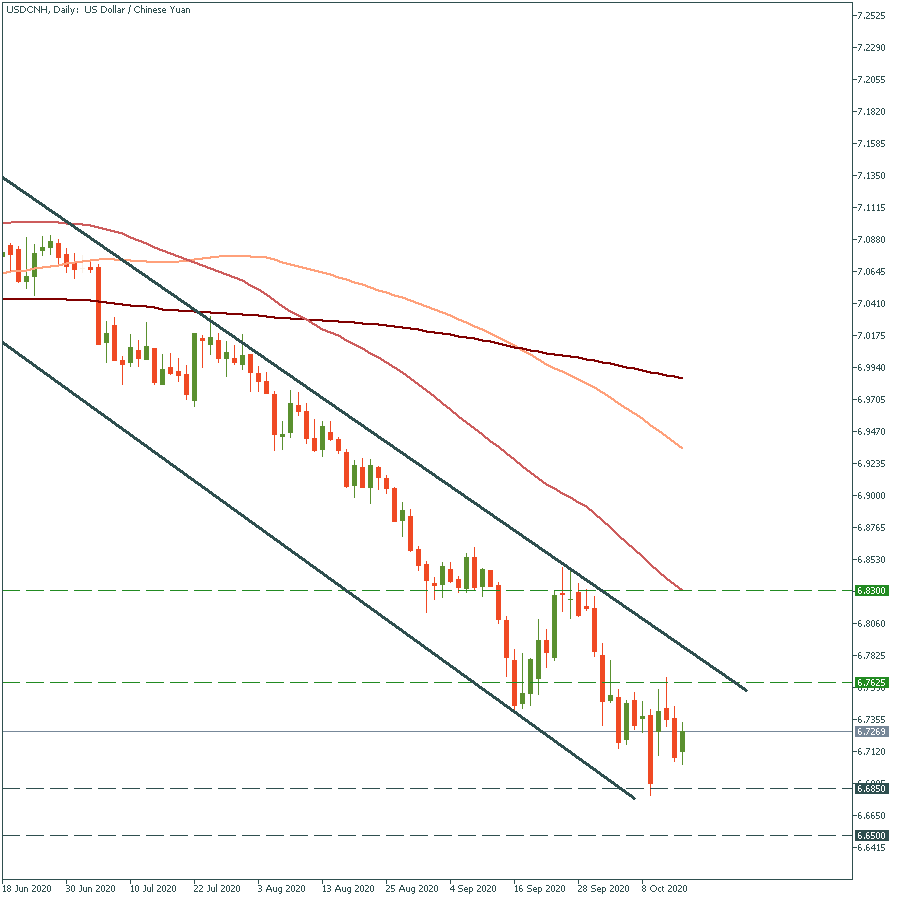Chinese yuan dropped after dire inflation data
USD/CNH has been steadily dipping, but downbeat China’s PPI and CPI limit the further falling.
What happened?
Chinese Producer and Consumer Price Indices came out worse than analysts anticipated: CPI rose by 1.7% vs. the forecast of 1.9%, whereas PPI contracted by 2.1% vs. the -1.9% expected.
The People’s Bank of China (PBoC) is unsatisfied with too much appreciated CNH as it makes China’s exports more expensive for buyers. In fact, China has been the world's largest exporter of goods since 2009. Why? Their products are simply cheaper, that’ why it’s crucial for China not to lose this advantage.
The PBoC changed the rules, making it cheaper for traders to bet against the yuan. According to Reuters, the bank claimed it “would lower to 0 from 20% the reserve requirement ratio for financial organizations when conducting some foreign exchange forwards trading”. By the way, analysts said that the PBOC tried the same move in 2017 and it didn’t help to stop the appreciation of the yuan.
Market reaction
The negative inflation data weighed on the Chinese yuan, and PBoC’s actions added headwinds to it. Besides, the pair is rising due to the high demand for the USD amid the risk-off sentiment.
Forecasts
According to United Overseas Bank, USD/CNH will keep falling in the long-term and will reach 6.60 by the middle of next year.
Technical tips
USD/CNH has been trading in a descending channel since late May. It may jump to the resistance of 6.7625, but the pair isn’t likely to break the upper trendline. We can expect it to bounce off this level and drop to the recent low of 6.6850, clearing the way towards the next support of 6.6500.
